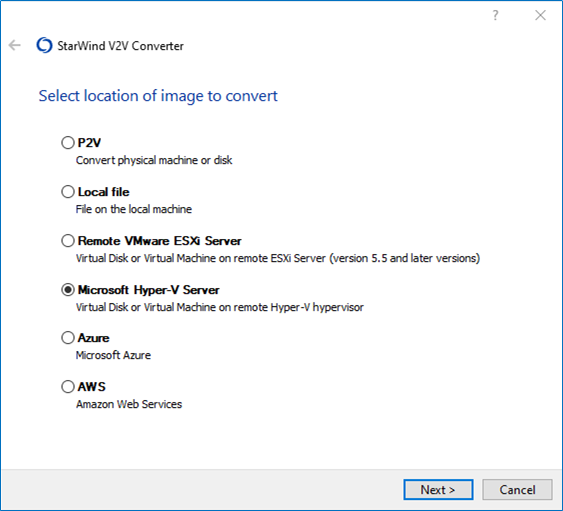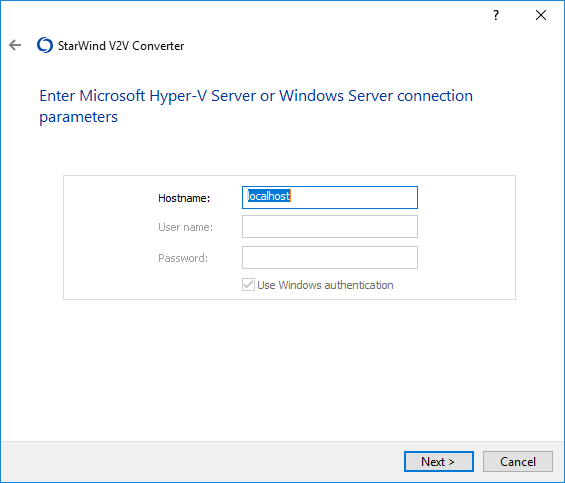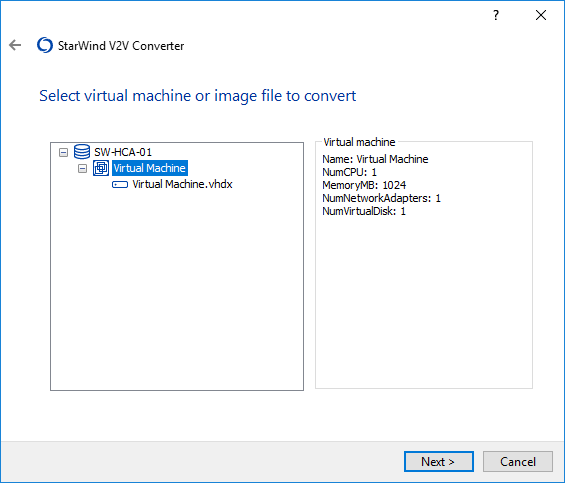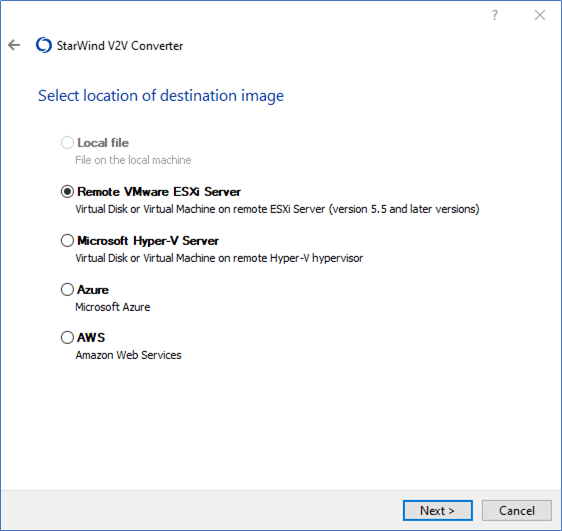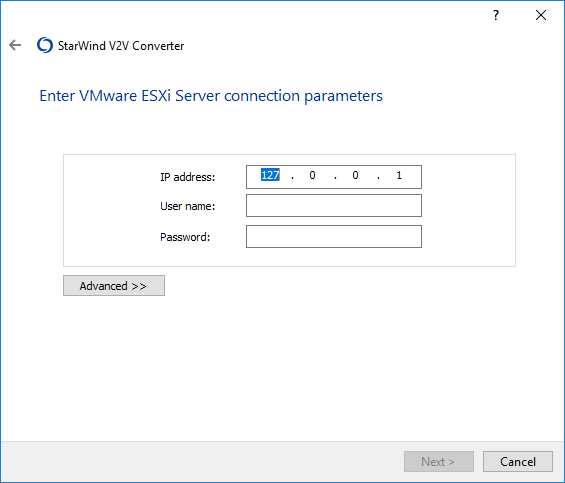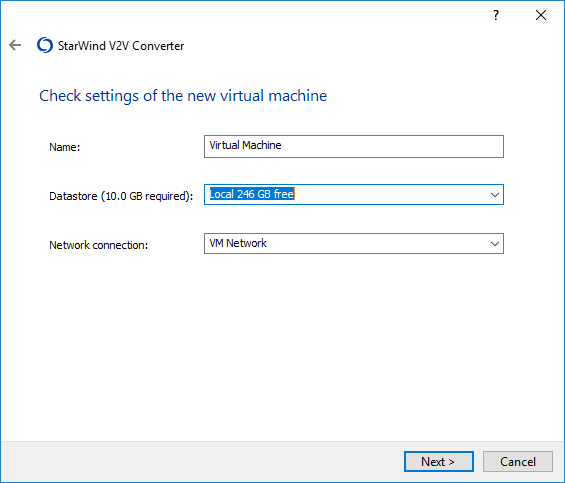A comprehensive guide to V2V technology: all you needed to know and a little bit more.
Defining V2V
In most of today’s IT setups, virtualization is the standard. We have powerful physical servers running hypervisors, and these hypervisors host various business apps and services in virtual machines, or simply, “VMs”.
Virtual to virtual conversion (V2V) – is a process of transferring a virtual machine (VM) and its files from one hypervisor to another for instance, from Hyper-V or vSphere to KVM or Xen.
V2V: Reasons to Migrate
It may seem that V2V conversion, or migration, is a bit of an exotic feature that is not required by everyday users, but seamless VM transitions are actually critical to admins for several reasons. Here are some of them:
- Certain features may not be supported on the hypervisor in use. In that case, it is essential to convert a VM to a different format.
- Financially it may make more sense to move VMs to an open-source environment as proprietary hypervisors can be too pricey sometimes.
- Practically it may make more sense to move VMs to a proprietary hypervisor as an open-source analogue is rarely potent enough to support the growing business infrastructure.
- Personal preferences. Although it may sound like an exaggeration, personal preferences play a huge part, and it is not new for admins to move VMs to another hypervisor simply because it is more comfortable in use!
V2V: How Does it Work?
V2V migration requires specialized software to efficiently transfer an existing VM from one platform to another. The entire process includes the copying and transferring VM virtual disks and configuration files. The V2V software replicates the source VM, transfers it to the target hypervisor, and ensures that the destination VM preserves the source VM’s state. Such an approach enables the VM to transition seamlessly between different environments all while preserving compatibility.
Hot or Cold?
Speaking of precise details, there are two distinct types of V2V migration: “cold” and “hot”. The former is performed when you are dealing with an inactive source system (usually, when it is powered off). This approach proves quite beneficial in scenarios where it is possible for the VM to go offline during the migration. Essentially, cold migration is perfect for tasks that are not top priority.
On the contrary, “hot” migration is your go-to option when the VM’s uptime is important, and the system cannot tolerate any downtime at all. This technology allows to migrate the VM when the software is still working on source host. When migration is completed, the VM is turned off on the source host and turned-on on the destination one. That way, admins can easily preserve seamless workflow which at times is vital for any organization.
Tools for V2V Migration
Naturally, performing V2V migration requires specific software. These tools enable V2V migration between various hypervisors; however, some of them are unidirectional, while others are archaic and cumbersome. So, let’s see how it works with the example of the world’s best V2V tool – StarWind V2V Converter.
V2V Migration Step-by-Step with StarWind V2V Converter: Hyper-V to VMware
Unlike some other analogues, StarWind V2V Converter converts VMs directly from one hypervisor server to another, saving your time by eliminating the need for an extra VM disk copy. In this case, let’s see how you migrate a Hyper-V VM to a VMware environment.
1. You can begin by picking one of the six available options that depend entirely on your needs. In your particular case, it is Microsoft Hyper-V.
Once you’re done, click Next.
2. Now, selecting the server details. Once you’ve finished here, click Next to proceed.
3. Pick the VM to convert. Here, it’s Hyper-V Source Image or Virtual Machine.
Once you’ve finished, click Next to proceed.
4. As the next step, you’ll need to specify the parameters of the Destination image location. In this case, we are selecting Remote VMware ESXi Server to proceed.
5. Choose the IP Address and credentials for VMware ESXi Server.
Once you’ve finished, click Next to proceed.
6. Check settings of the new VM. If everything’s alright, move on and click Next to proceed.
7. Now, you’re just about done. When the migration process is done, then click Finish to close the Wizard, and voila! This is an example of a successfully completed migration of a virtual machine from Microsoft Hyper-V to a VMware vSphere virtual machine.
To Conclude
Honestly, it is hard to overestimate the role that V2V migration plays in virtualization. By allowing users to move VMs between hosts, platforms, and data centers without interruptions, V2V tools increase flexibility and resource capacity for businesses that work with virtualized environments. Now good luck!
FAQ
What is the difference between V2V and P2V?
V2V moves a VM to another VM, while P2V is migrating an OS from a physical machine to a VM.
What is Vehicle-to-Vehicle (V2V) Communication?
Vehicle-to-Vehicle (V2V) communication wirelessly transfers information between vehicles regarding their speed and location. Its purpose is preventing crashes by allowing drivers to access the real-time status of nearby vehicles.
What is not V2V migration?
Moving a VM between resource pools in the same virtual environment or cloning a VM within the same hypervisor is not V2V migration.
This material has been prepared in collaboration with Viktor Kushnir, Technical Writer with almost 4 years of experience at StarWind.



